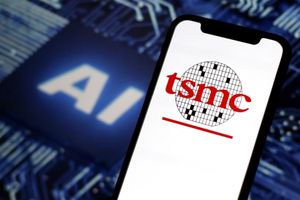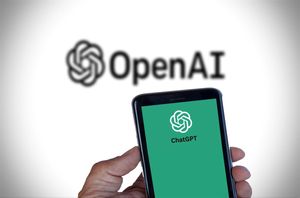Financial News
Tandem Diabetes Care Announces Presentations Demonstrating Positive Real-World Improvements with Control-IQ Technology Across Diverse Populations
Tandem Diabetes Care, Inc. (NASDAQ: TNDM), a leading insulin delivery and diabetes technology company, today presented positive real-world data from ongoing use of the t:slim X2™ insulin pump with Control-IQ® advanced hybrid closed-loop technology, demonstrating statistically significant improvements in glycemic and patient-reported outcomes. Emphasis was placed on qualitative experiences as well as insights from diverse populations using the system. The data was presented this week during the 81st Scientific Sessions of the American Diabetes Association.
“People living with diabetes are benefiting from our Control-IQ technology across diverse populations and therapeutic backgrounds, which supports our mission to improve the lives of people living with diabetes,” said John Sheridan, president and CEO of Tandem Diabetes Care. “In addition to improved glycemic control, the data presented this week demonstrated holistic improvements in people’s lives including decreased diabetes burden and improved quality of life.”
ADA PRESENTATION SUMMARIES
Glycemic Outcomes by Ethnicity in Adults with Type 1 Diabetes Using Control-IQ Technology: Early Results from the CLIO Study
Oral Presentation (217-OR)
Session: Insulin Delivery Systems
This presentation reported outcomes from the ongoing Control-IQ Observational (CLIO) study evaluating real-world use of the t:slim X2 insulin pump with Control-IQ technology in diverse groups of people with type 1 diabetes. At baseline, Black participants reported the highest HbA1c (8.1%) compared to participants from other ethnic cohorts. Using Control-IQ technology, Glucose Management Indicator (GMI) at 21 days reflected significant glycemic improvements across all ethnic groups with Asian participants showing the lowest GMI (6.8%) followed by Caucasian participants (7.0%). At 21 days, the median sensor time in range (TIR) of Black participants (62.7%, IQR=53.4-74.7) was significantly lower than for Caucasian participants (75.1%, IQR=70.3-81.0) while controlling for age, gender, reported exercise, annual income, and prior therapy. Baseline HbA1c was the key factor predicting sensor TIR, followed by exercise, annual income, and multiple daily injections (MDI, prior therapy). Disparities in glycemic outcomes across socioeconomic and demographic groups recorded at baseline remained after initiating an automated insulin dosing system. However, Control-IQ technology significantly improved glycemic outcomes for all ethnic groups.
Insulin Delivery Patterns Vary Across Age Groups with Use of Control-IQ Technology*
Poster Presentation (92-LB)
Category: Clinical Therapeutics/New Technology—Insulin Delivery Systems
— Recipient of the American Diabetes Association’s Diabetes Technology Interest Group 2021 Abstract Award in the Category of Clinical Therapeutics/New Technology—Insulin Delivery Systems. —
This presentation reported insulin use on the t:slim X2 pump with Control-IQ technology from the ongoing CLIO Study evaluating real-world use of the t:slim X2 insulin pump with Control-IQ technology in a large, diverse cohort with type 1 diabetes. Study sample included 1,499 participants who had uploaded at least 21 days of pump data to Tandem’s t:connect® web application and had 75% CGM use during this time. Insulin delivery during the study was compared to standard formulas for predicting correction factor (CF = 1,800/total daily dose) and carbohydrate ratio (CR = 450/total daily dose). Results demonstrated that insulin use with the t:slim X2 pump with Control-IQ technology differed from standard prediction formulas across age groups, in that the correction factor prediction factor (CFPF) was significantly greater in children and teenagers. CFPF was lowest in children aged 6-9 and in adults aged 66 and above. Additional study is recommended, with comparison to final glycemic outcomes, to determine ideal insulin delivery settings with Automated Insulin Dosing, as examination of insulin use patterns may assist in optimizing outcomes.
* Lead author, Dr. Jordan Pinsker, is currently the Medical Director at Tandem Diabetes Care. This study was completed during Dr. Pinsker’s employment at Sansum Diabetes Research Institute prior to joining the company.
“I Feel Human, I Feel Normal”: A Qualitative Study of Experiences with Control-IQ Technology in Early Adopters
Poster Presentation (531-P)
Category: Psychosocial, Behavioral Medicine
This presentation reported results from qualitative analyses of semi-structured interviews conducted with adult (N=27) early adopters of Control-IQ technology to understand their experiences of initiating and continued use of this technology. Improved sleep quality, glycemic control, and sensor time in range were common themes reported by participants along with reduced burden of diabetes management. Overall, participants described valuable improvements in their quality of life, including reduced stress and decision-making around diabetes management, and increased freedom and spontaneity in daily life with continued use of Control-IQ technology.
Real-World Evaluation of Glycemic Outcomes by Prior Therapy for People with Type 1 and Type 2 Diabetes Onboarding to Control-IQ Technology
Poster Presentation (710-P)
Category: Clinical Therapeutics/New Technology—Insulin Delivery Systems
This presentation examined retrospective analysis of real-world glycemic outcomes by previous therapy between people with type 1 and type 2 diabetes over a period of six months after they onboarded to Control-IQ technology (excluding individuals who had undergone a software update from a previous Tandem system). After 180 days of starting Control-IQ technology, for prior pump users with type 1 diabetes, sensor TIR was 74% (median, IQR 65-81%) and time below <70mg/dL was 1.2% (IQR 0.6-2.1%). For prior pump users with type 2 diabetes, sensor TIR was 76% (IQR 69-82%) and time below <70mg/dL was 0.5% (IQR 0.2-1.0%). For participants transitioning from MDI, Control-IQ technology resulted in sensor TIR of 74% (IQR 64-83%) and 0.9% time below <70mg/dL (IQR 0.4-1.7%) for people with type 1 diabetes and 74% TIR (IQR 63-84%) and 0.3% time below <70mg/dL (IQR 0.1-0.6%) for people with type 2 diabetes. Using Control-IQ technology, both type 1 and type 2 diabetes participants (irrespective of prior therapy) achieved the recommended sensor TIR and time below <70mg/dL outcomes.
About Control-IQ Advanced Hybrid Closed-Loop Technology
The t:slim X2 insulin pump with Control-IQ technology uses Dexcom G6 CGM values, in conjunction with other variables such as insulin on board, to predict sensor glucose levels 30 minutes ahead and adjust insulin delivery accordingly.1,2,3 Control-IQ technology is designed to increase sensor time in range by automatically increasing, decreasing, or stopping insulin delivery, or giving an automatic correction bolus based on predicted glucose levels. Control-IQ technology also offers optional settings for sleep and exercise that will change treatment values to better match the different physiologic needs during these activities.
About Tandem Diabetes Care, Inc.
Tandem Diabetes Care, Inc. (www.tandemdiabetes.com) is a medical device company dedicated to improving the lives of people with diabetes through relentless innovation and revolutionary customer experience. The Company takes an innovative, user-centric approach to the design, development, and commercialization of products for people with diabetes who use insulin. Tandem manufactures and sells the t:slim X2 insulin pump with Control-IQ technology. The t:slim X2 pump is capable of remote feature updates using a personal computer and is the only automated insulin dosing device approved for children as young as six years old. Tandem is based in San Diego, California.
Responsible Use Statement
Control-IQ technology does not prevent all high and low blood glucose events, and is not a substitute for meal boluses and active self-management of diabetes. Control-IQ technology will not be able to predict sensor glucose values and adjust insulin dosing if a user’s CGM is not working properly or is unable to communicate with their pump. Users should be instructed to always pay attention to their symptoms and blood glucose levels and treat accordingly. Please visit tandemdiabetes.com/tslimX2-use for more information.
Important Safety Information: RX ONLY. The t:slim X2 pump and Control-IQ technology are intended for single patient use. The t:slim X2 pump and Control-IQ technology are indicated for use with NovoLog or Humalog U-100 insulin. t:slim X2 insulin pump: The t:slim X2 insulin pump with interoperable technology is an alternate controller enabled (ACE) pump that is intended for the subcutaneous delivery of insulin, at set and variable rates, for the management of diabetes mellitus in people requiring insulin. The pump is able to reliably and securely communicate with compatible, digitally connected devices, including automated insulin dosing software, to receive, execute, and confirm commands from these devices. The t:slim X2 pump is indicated for use in individuals six years of age and greater. Control-IQ technology: Control-IQ technology is intended for use with a compatible integrated continuous glucose monitor (iCGM, sold separately) and ACE pump to automatically increase, decrease, and suspend delivery of basal insulin based on iCGM readings and predicted glucose values. It can also deliver correction boluses when the glucose value is predicted to exceed a predefined threshold. Control-IQ technology is intended for the management of Type 1 diabetes mellitus in persons six years of age and greater.
WARNING: Control-IQ technology should not be used by anyone under the age of six years old. It should also not be used in patients who require less than 10 units of insulin per day or who weigh less than 55 pounds. |
Control-IQ technology is not indicated for use in pregnant women, people on dialysis, or critically ill patients. Do not use Control-IQ technology if using hydroxyurea. Users of the t:slim X2 pump and Control-IQ technology must: use the insulin pump, CGM, and all other system components in accordance with their respective instructions for use; test blood glucose levels as recommended by their healthcare provider; demonstrate adequate carb-counting skills; maintain sufficient diabetes self-care skills; see healthcare provider(s) regularly; and have adequate vision and/or hearing to recognize all functions of the pump, including alerts, alarms, and reminders. The t:slim X2 pump, and the CGM transmitter and sensor must be removed before MRI, CT, or diathermy treatment. Visit tandemdiabetes.com/safetyinfo for additional important safety information.
© 2021 Tandem Diabetes Care, Inc. All rights reserved. Tandem Diabetes Care, t:slim X2, Control-IQ, and t:connect are either registered trademarks or trademarks of Tandem Diabetes Care, Inc. in the United States and/or other countries. Dexcom and Dexcom G6 are either registered trademarks or trademarks of Dexcom, Inc. in the United States and/or other countries. All third-party marks are the property of their respective owners.
1 If glucose alerts and CGM readings do not match symptoms or expectations, use a blood glucose meter to make diabetes treatment decisions.
2 Dexcom G6 CGM sold separately.
3 The Dexcom G6 CGM transmitter can only be paired with one medical device (either a Dexcom receiver or t:slim X2 pump) and one consumer device (phone or tablet) at the same time.
View source version on businesswire.com: https://www.businesswire.com/news/home/20210627005025/en/
Contacts
Media: Steve Sabicer, 714-907-6264, ssabicer@thesabicergroup.com
Investors: Susan Morrison, 858-366-6900 x7005, IR@tandemdiabetes.com
More News
View More




Recent Quotes
View More
Quotes delayed at least 20 minutes.
By accessing this page, you agree to the Privacy Policy and Terms Of Service.



